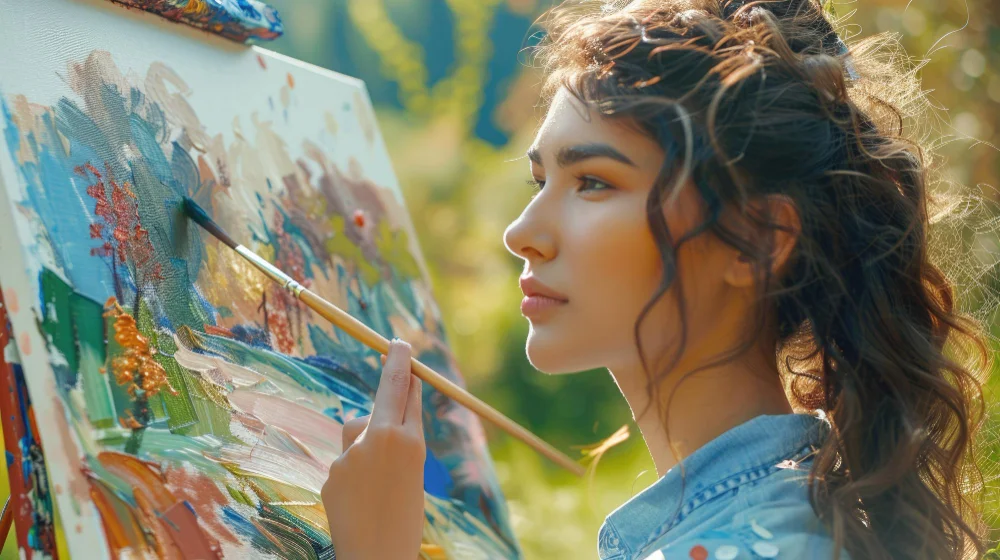Art, in its many forms, has always been a fundamental aspect of human culture and expression. From the earliest cave paintings to the most advanced digital creations, art reflects our innermost thoughts, emotions, and ideas. But what exactly is possible in the world of art? Let’s dive into the boundless possibilities and explore the diverse landscape of artistic expression.
The Boundless Possibilities of Traditional Art
Painting
Painting is one of the oldest and most revered forms of art. It encompasses a wide range of techniques, from the delicate strokes of watercolor to the bold, textured layers of oil paints. Artists like Leonardo da Vinci and Vincent van Gogh have left indelible marks on the world with their masterpieces. Today, painting continues to evolve, with contemporary artists experimenting with new mediums and styles to push the boundaries of what is possible on canvas.
Sculpture
Sculpture, the art of creating three-dimensional forms, has a rich history dating back to ancient civilizations. From the marble statues of ancient Greece to the avant-garde installations of the 21st century, sculpture has continually transformed. Iconic sculptors like Michelangelo and Auguste Rodin have inspired countless others to explore the potential of materials like stone, metal, and even recycled objects.
Drawing
Drawing, often considered the foundation of visual arts, comes in many forms. Whether it’s the intricate detail of a pencil sketch or the bold lines of a charcoal drawing, this art form allows for immense creative expression. Influential artists like Albrecht Dürer and Pablo Picasso have shown that drawing can be both a preliminary step in the artistic process and a standalone work of art.
Modern and Contemporary Art Forms
Digital Art
In the age of technology, digital art has emerged as a powerful medium. Artists use tools like Adobe Photoshop, Corel Painter, and digital tablets to create stunning works that were once impossible. Digital art allows for endless experimentation with color, texture, and form. Prominent digital artists, such as Beeple and Hito Steyerl, are redefining what it means to be an artist in the digital age.
Performance Art
Performance art blurs the lines between artist and audience, often involving live performances that are both captivating and thought-provoking. Elements of theater, dance, and visual art combine to create immersive experiences. Artists like Marina Abramović and Yoko Ono have pushed the boundaries of performance art, challenging viewers to engage with their work on a deeper level.
Installation Art
Installation art transforms spaces into immersive environments. These works often require the viewer to move through or around them, creating a physical and emotional journey. Notable installations like Christo and Jeanne-Claude’s “The Gates” and Yayoi Kusama’s “Infinity Mirrors” demonstrate the power of art to alter perceptions and evoke profound responses.
The Fusion of Technology and Art
Virtual Reality (VR) Art
Virtual reality art offers immersive experiences that transport viewers to entirely new worlds. Using VR headsets, artists can create interactive environments where audiences can explore and engage with the art. VR artists like Jonathan Yeo are pioneering this field, creating works that challenge our understanding of space and presence.
Augmented Reality (AR) Art
Augmented reality art overlays digital content onto the real world, enhancing our perception of reality. This technology is used to create interactive installations and public art pieces that engage viewers in unique ways. Artists like Olafur Eliasson have utilized AR to transform public spaces, making art accessible and interactive.
AI and Machine Learning in Art
Artificial intelligence and machine learning are revolutionizing the art world. Artists use algorithms to generate new works, often blurring the line between human and machine creativity. AI-created art, such as the works produced by the collective Obvious, sparks debates about authorship and the nature of creativity itself.
Art as a Medium for Social Change
Political Art
Art has always been a powerful tool for political expression. From Francisco Goya’s harrowing depictions of war to the bold street art of Banksy, artists use their work to comment on societal issues and inspire change. Modern movements continue this tradition, addressing topics like immigration, inequality, and human rights.
Environmental Art
Environmental art seeks to raise awareness about ecological issues through creative expression. Artists like Andy Goldsworthy and Agnes Denes use natural materials and landscapes to create works that highlight the beauty and fragility of our planet. These projects often inspire viewers to consider their own impact on the environment.
Community Art Projects
Community art projects bring people together to create collaborative works. These initiatives often aim to address social issues, foster community spirit, and promote cultural exchange. Projects like JR’s “Inside Out” and the “Painted Pianos” project demonstrate the power of art to unite and uplift communities.
Art in Everyday Life
Street Art
Street art transforms public spaces into open-air galleries. Graffiti, murals, and stencils are just a few forms this art takes. Artists like Keith Haring and Banksy have elevated street art to a global phenomenon, challenging traditional notions of art and its place in society.
Art Therapy
Art therapy uses creative expression as a means of healing. By engaging in artistic activities, individuals can process emotions, reduce stress, and improve mental health. Success stories in art therapy, such as programs for veterans and trauma survivors, highlight the profound impact art can have on well-being.
Decorative Arts
Decorative arts blend aesthetics with functionality, enhancing our everyday lives. This category includes ceramics, textiles, and furniture design. Popular styles like Art Nouveau and Mid-Century Modern show how art can beautify our surroundings while serving practical purposes.
Conclusion
The world of art is as vast and varied as the human experience itself. From traditional forms to cutting-edge digital creations, art continues to evolve and inspire. As technology advances and society changes, the possibilities for artistic expression are limitless. Whether it’s through painting, sculpture, performance, or digital mediums, art remains a powerful tool for communication, reflection, and transformation.

